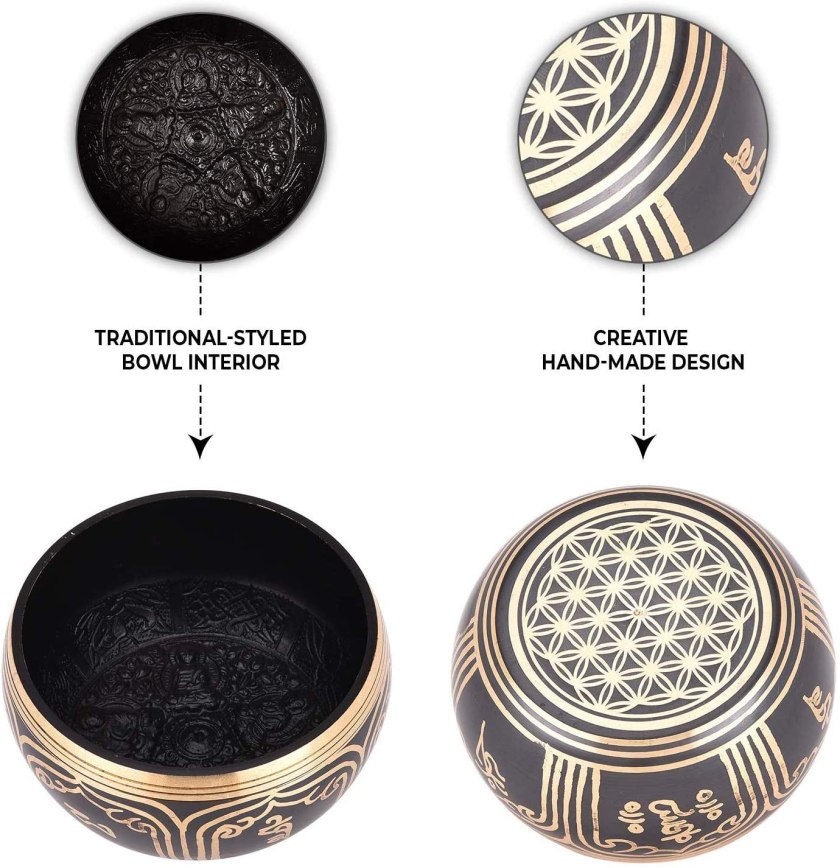
Poor mood and elevated anxiety are linked to increased incidence of disease. This study examined the effects of sound meditation, specifically Tibetan singing bowl meditation, on mood, anxiety, pain, and spiritual well-being. Sixty-two women and men (mean age 49.7 years) participated. As compared with pre-meditation, following the sound meditation participants reported significantly less tension, anger, fatigue, and depressed mood (all Ps <.001). Additionally, participants who were previously naïve to this type of meditation experienced a significantly greater reduction in tension compared with participants experienced in this meditation (P < .001). The feeling of spiritual well-being significantly increased across all participants (P < .001). Tibetan singing bowl meditation may be a feasible low-cost low technology intervention for reducing feelings of tension, anxiety, and depression, and increasing spiritual well-being. This meditation type may be especially useful in decreasing tension in individuals who have not previously practiced this form of meditation.
Heart disease, diabetes, addiction, and mental health issues have all been linked to stress and tension. Meditation, including systems such as mindfulness-based meditations, has shown promise in inducing the relaxation response and helping alleviate anxiety and improve well-being. The relaxation response is the body’s physiological response in relaxation, including lowered blood pressure to counter the fight-or-flight response and activation of the parasympathetic nervous system. As promising as mindfulness and other meditation systems may be, a common complaint is time, patience, and discipline required to learn meditation. Thus, a form of relaxation and stress relief that does not require a steep learning curve or a great deal of discipline to utilize could potentially be a huge benefit to human wellness and health.
The authors set out to examine the possibility that merely lying down and listening to the high-intensity, low-frequency combination of singing bowls, gongs, and bells in a sound meditation could induce a deep relaxation response and positively affect mood and sense of well-being. Sound healing has been used for centuries and been utilized in various forms by cultures the world over, including native peoples. Australian aboriginal tribes have used the didgeridoo as a sound healing instrument for over 40,000 years. Ancient instruments have also been used for religious and spiritual ceremonies such as Tibetan (also called “Himalayan”) singing bowls. Tibetan singing bowls are metal bowls usually consisting of a combination of metal alloys and originally used by Tibetan monks for spiritual ceremonies.
While sound healing is not a new concept, there is a paucity of research in areas such as Tibetan singing bowls. The majority of singing bowl studies relate to the physics of these musical instruments, including the sonic and wave properties, as well as attempting to model the singing bowl’s acoustic characteristics. In one study, singing bowls were used for emotional healing with high-risk youth as part of what was termed the best self-visualization method. The bowls were used in a psychotherapy model in combination with deep breathing, visualization, and loving-kindness meditation. The authors reported that this combination of healing methods may be a catalyst for emotional and psychological healing in counseling sessions.
The purpose of the present study was to further advance research in this area by examining the possible effects of singing bowls and sound healing on mood, anxiety, physical pain, and spiritual well-being, and to lay the foundation for a future more formal randomized control trial.